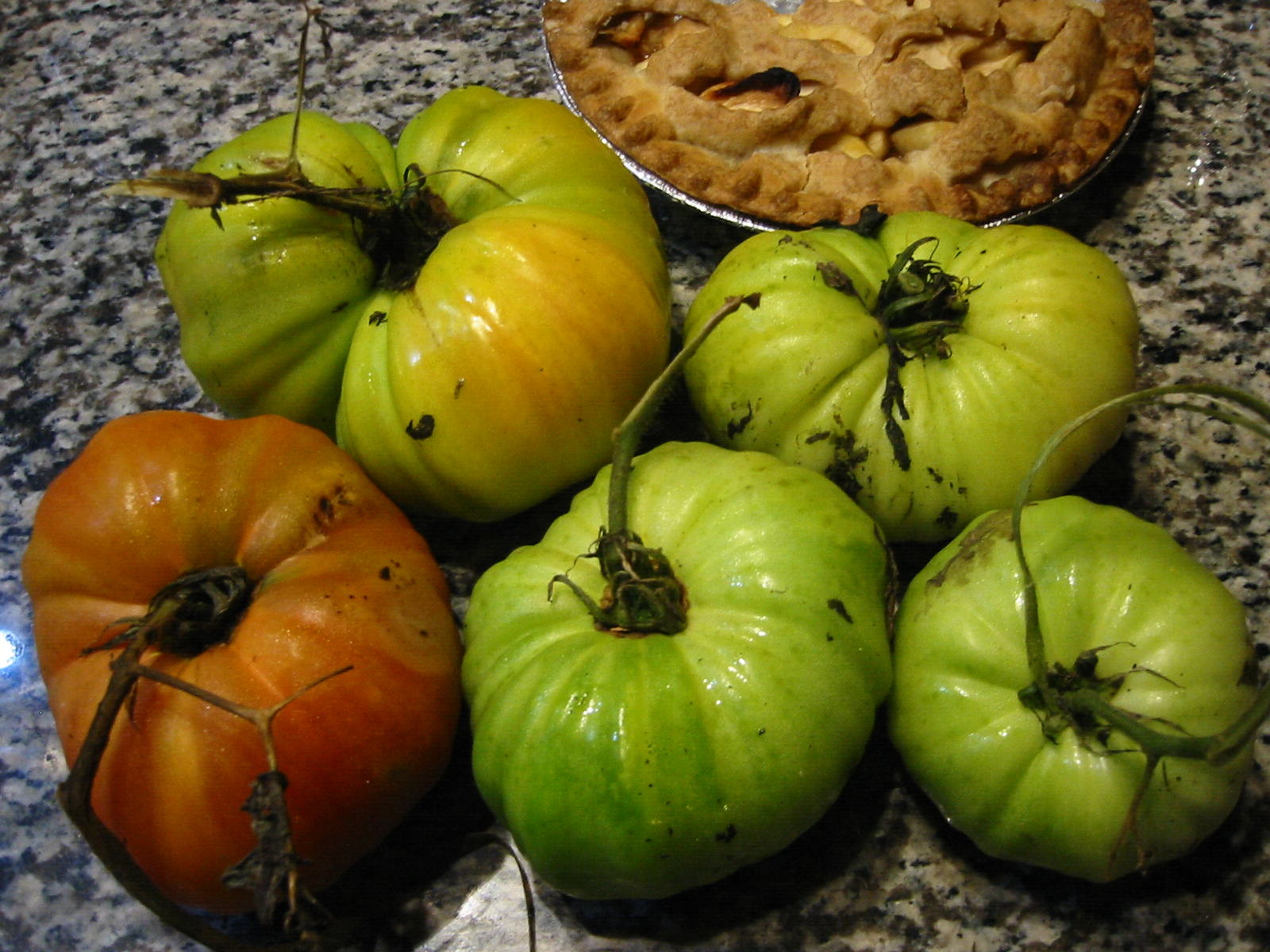There's lots of talk these days about heirloom plants, especially tomatoes. But what's all the hype about heirlooms?
I write this article as I'm making tomato sauce to be preserved for our long cold winter. This is my first year canning tomatoes and sauce and I've paid more attention to the varieties of tomatoes I'm using. So this subject does deserve some attention.
So what exactly is a heirloom tomato? Essentially it's an older variety that's stable and comes true from seed. Quite a few tomatoes are hybrids which means their seeds come from two different tomato parents crossed together but the seeds from the hybrid won't produce the same tomato. Plant breeding dates back centuries. Although most plant breeding was simply done by natural selection, it's still plant breeding. Imagine a farmer in the 1700's or 1800's growing tomatoes. They take the seeds they have and plant them to get a thousand plants. They grow them through the season. Some do well and some don't. Some die from diseases while some are more resistant. Some crack more and others don't. All kinds of things happen. Our historic farmer then harvests his tomatoes and brings them to market. But unlike modern times where we get new plants or seeds each year, he needs to collect his own seeds. Being a clever fellow (which many farmers are but don't get their due credit), he only saves the seeds from his best tomatoes - the ones that grew well, didn't get diseases and didn't crack. Do this for a few generations and suddenly the crop gets better and better each year and also gets more and more consistent. The cross pollination from those first 1000 plants has stabilized to create a new variety. Essentially, this is the source of heirloom tomatoes.
Modern plant breeding has a somewhat different criteria than our historic farmer did. After all, he hand-worked the field and people came to him to get his tomatoes. That, and he sold everything fresh. Modern plant breeding, because of consumer habits, has necessitated a different criteria of plants. Our tomatoes still need to be disease free and crack resistant with a decent yield just like our old farmer, but other factors have come to the forefront like shelf life, resistance to bruising, preservation, uniformity, colour, and other factors irrelevant to the older farmers. But there is one key criteria that was different to our ancestral farmer: taste. Our old farmer looked his customer in the eye and handed them a beautiful tomato and it had to taste good while today we have no idea who grew our tomato. We rarely know who produces our tomatoes.
Since modern tomatoes have a different criteria, that makes tomatoes different. Not necessarily better, but different. Modern tomatoes are more resistant to cracking and have less diseases and higher yields than heirlooms. But usually, though not always, heirlooms taste better.
What do I prefer? Well, mostly heirlooms and a few modern hybrids. Heirlooms like Beefsteak, Brandywine, and Purple Cherokee don't really have modern counterparts and just can't be beat. The old Roma is rather hard to beat, though the modern Roma counterpart Bellstar is very impressive and still tastes good. On the other hand, odd-ball heirlooms like Black Krim which cracks a lot and it's hard to tell if it's ripe is a tough call. It's taste is quite good, but it can be mealy. Green Zebra is also interesting, but again, hard to tell when it's ready since it's still mostly green. The modern hybrid Celebrity is also a very impressive tomato and the flavour isn't bad, either.
In the end, it will be a matter of trial and error to find the perfect tomato. Luckily the pure processing tomatoes aren't commonly available to home gardener so we've eliminated the factory tomato from the picture. But I do highly suggest keeping a notebook and try different varieties, both heirlooms and hybrids. Make notes on how they grow and especially how they taste. In the end, your pallet will make the decision. Plant a couple new ones every year and an old favourite or two and make your notes. And if you do find one variety more spectacular than other, pass it on so others know. Above all, enjoy the satisfaction of growing your own tomatoes.

